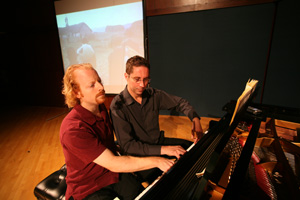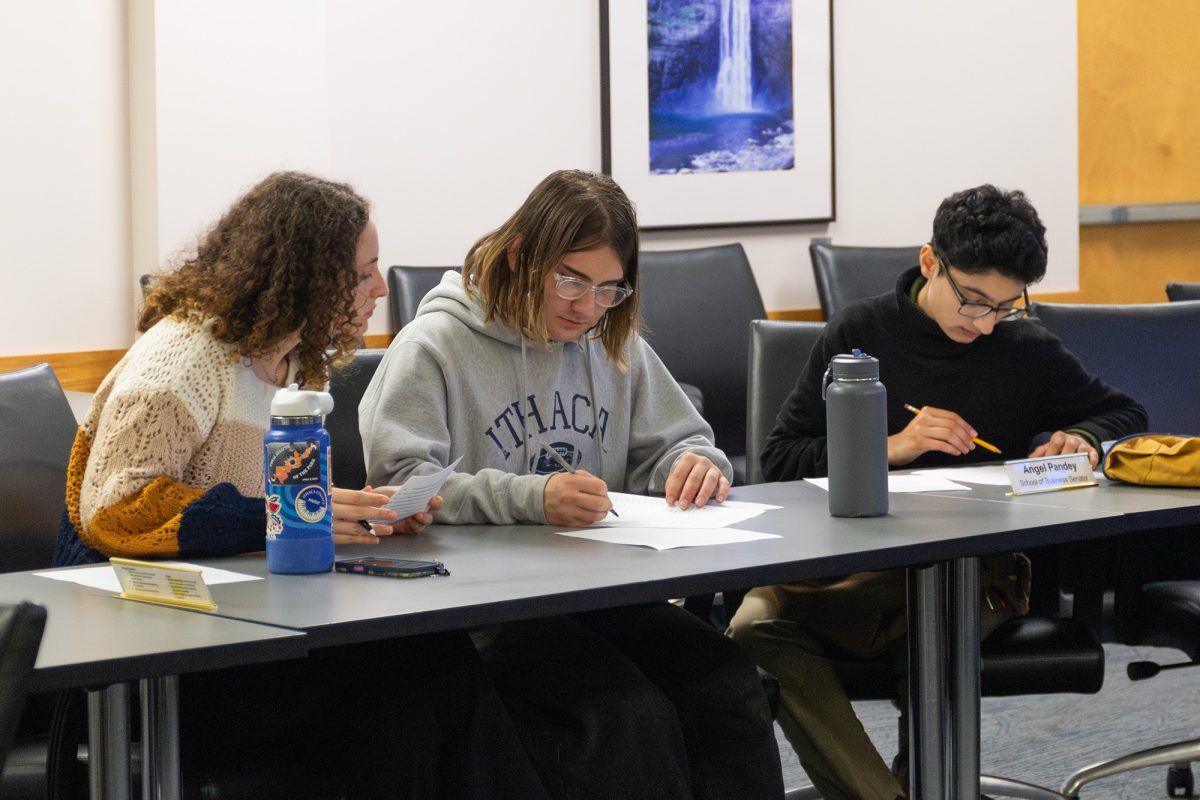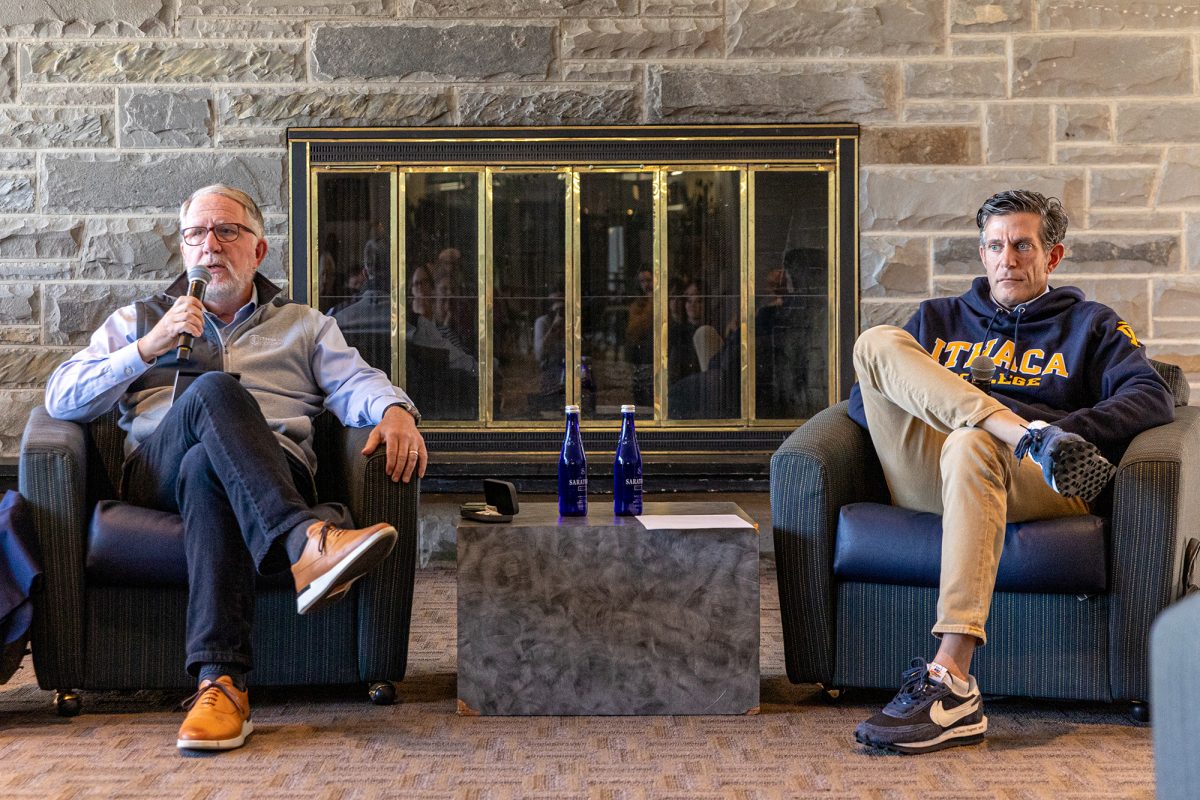In a performance presented today to Ithaca College students, the stage will serve as a collage of music, culture and passion. Two pianists will play a tango for a pair of dancers against a backdrop of images from 20th century life in Latin America, Paris and New York City.

The performance, originally created by five Ithaca College faculty members for the 2006 Finger Lakes Environmental Film Festival (FLEFF), will gain national recognition Oct. 19 when it is presented at this year’s National Alliance for the Media Arts and Culture (NAMAC) conference in Austin, Texas.
The presentation is set to the music of famous Argentinean composer Astor Piazzolla’s “Quatro Estaciones Portenas” (The Four Seasons of Buenos Aires).
Students at the college will be able to see the performance as part of a freshman seminar at 1 and 9 p.m. today in the Hockett Family Recital Hall in the James J. Whalen School of Music.
Patricia Zimmermann, professor of cinema and photography and co-director of FLEFF, said NAMAC is well-respected among the media and arts communities as an organization that advocates for independent film, video and digital arts.
Zimmermann said the performance began as a research project in alternative forms of art and music.
“It started out as a project to investigate ways one can create access into music and visual art that is not part of North America’s popular culture,” she said.
Zimmermann said NAMAC’s invitation is an honor for both the college and FLEFF. The college will be the only academic institution making a presentation at the conference, where the professors involved will discuss the college’s innovative techniques.
“Ithaca College has national recognition as a leading innovator in film archives, music and investigative issues in historiography and environmentalism,” Zimmermann said. Thomas Shevory, chair and professor of politics at the college and co-director of FLEFF, said the performance is exciting for the college.
“It’s getting [Ithaca College] out there in the world of arts and museums,” Shevory said. “It really showcases [the college] as an art-rich environment.”
The performance’s creators called their work unique because it encompasses different media performed by professors in different fields.
Jairo Geronymo, assistant professor of music performance and a pianist in the project, said he enjoyed working with professors with different specialties.
“We are all collaborating in this project, and we are all bringing a slightly different view,” he said. “That is the secret of the project.”
Jeffery Meyer, assistant professor of music performance, said the media in the project — dance, music and film — complement each other.
“Where there is cross-disciplinary collaboration the effect is often greater then the sum of its parts,” he said.
Geronymo said people will expect the performance to have a plot, but the experience is about the different elements coming together. Geronymo, who is a native Brazilian, joined the performance for academic purposes as well as personal satisfaction.
“I am Brazilian, so the music of Argentina has always been close to my heart,” he said.
The Human Studies Film Archives at The Smithsonian Institution provided archival amateur footage of both indigenous and modern cultures. The film had never before been displayed in a public forum.
Pamela Wintle, film archivist at The Smithsonian Institute, said she hopes the performance gives viewers an appreciation of amateur film.
“[It] captures a part of the world that was lost,” she said.
Zimmerman said one of the goals of the project is to create a presentation that challenges expectations.
“It is an event that is provocative and has the audience asking questions,” she said.







